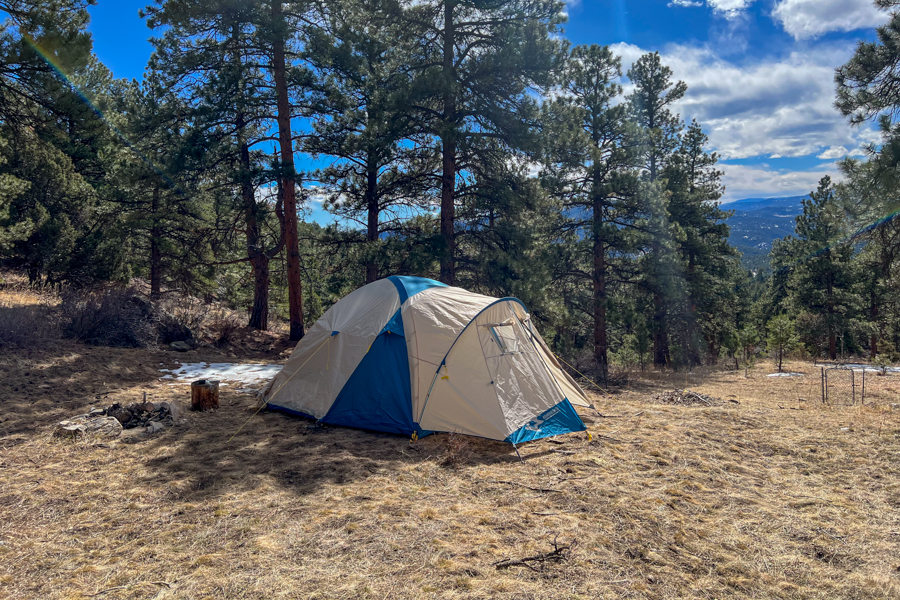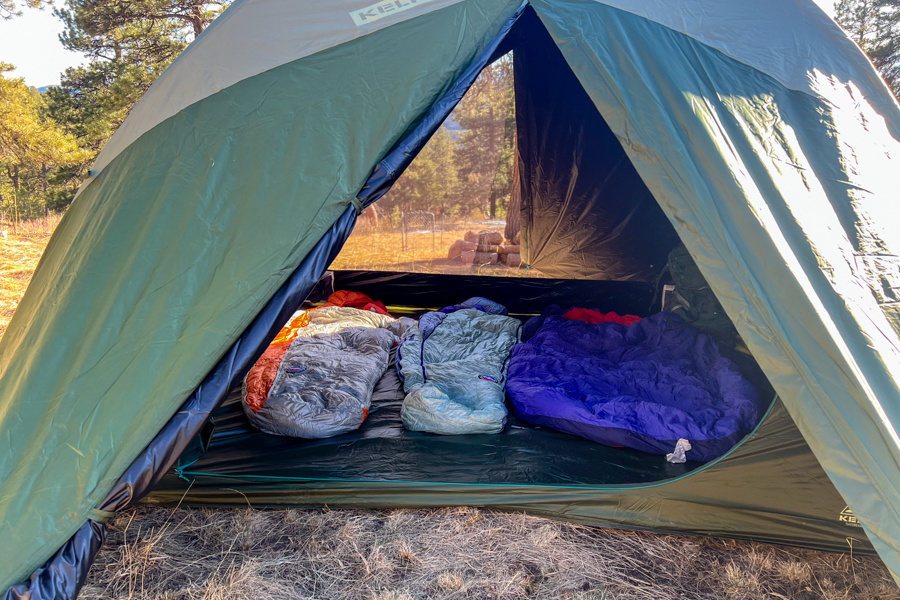
Bottom Line
Few tents are as polarizing as the Gossamer Gear The One, with numerous sacrifices made in the name of ultralight affordability, making it difficult to recommend generally for most people. However, there is sure to be a subset of individuals who recognize all the flaws and still say, “yup, that’s the tent for me,” and we wholeheartedly agree. Despite the tradeoffs, The One still excels in many areas. Its amazing weight, low price, and generous headroom make it particularly appealing for thru-hikers. The quality of construction is also top-notch, featuring clean lines, attractively colored cords, and smooth zippers that enhance the overall experience.
However, these design trade-offs are quite significant. The thin 10d silnylon material makes us a bit anxious when testing this on rough surfaces or in storms. Additionally, the nearly vertical back wall combined with a partial vestibule means it has one direction that is absolutely terrible in the wind. The small interior also isn’t suitable for taller individuals without consistent use of the panel pulls on both ends.
On a lesser note, the small door is somewhat annoying, but not a deal breaker. However, at the end of the day, no other tent can match this weight for the price, and it’s this incredible price-to-weight ratio that makes The One so difficult to overlook. For the right person, this is a fantastic shelter. It’s for someone experienced enough in backpacking to understand the trade-offs and know how to incorporate The One into their adventures without the downsides becoming too significant. If that person is you, we believe you’ll have a fantastic experience, but if you’re uncertain, other shelters in our guide to ultralight tents may be a better choice.
Quick Specs
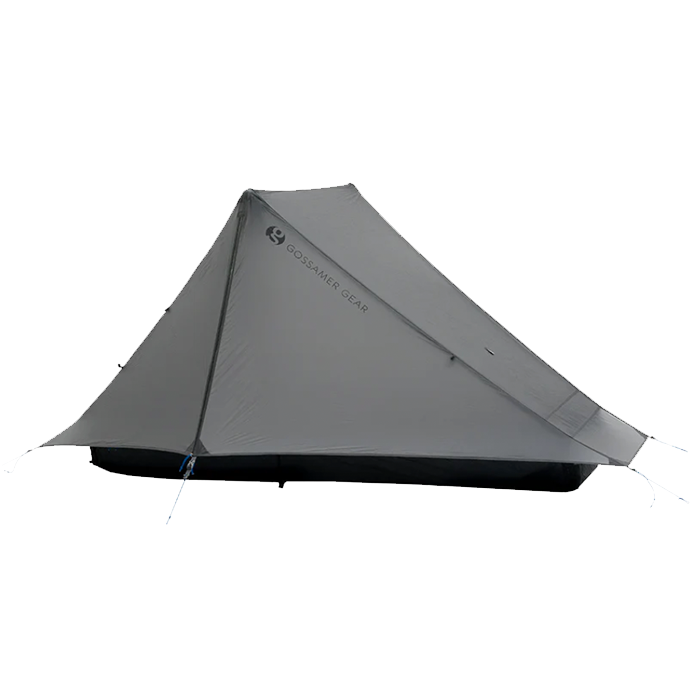
Gossamer Gear The One
Best Super Lightweight One-Person Silnylon Tent
CleverHiker Rating: 3.8/5.0
Price: $255
Weight: 1 lb. 3.5 oz.
Dimensions (LxWxH): 84 x 33/21 x 45 in.
Floor Area: 15.8 sq ft
Pros
- Extremely light for a silnylon shelter
- Easy to pitch
- Great headroom
- Huge peak vent
Cons
- Tiny door
- Small interior
- Not great for storms
- Thin materials
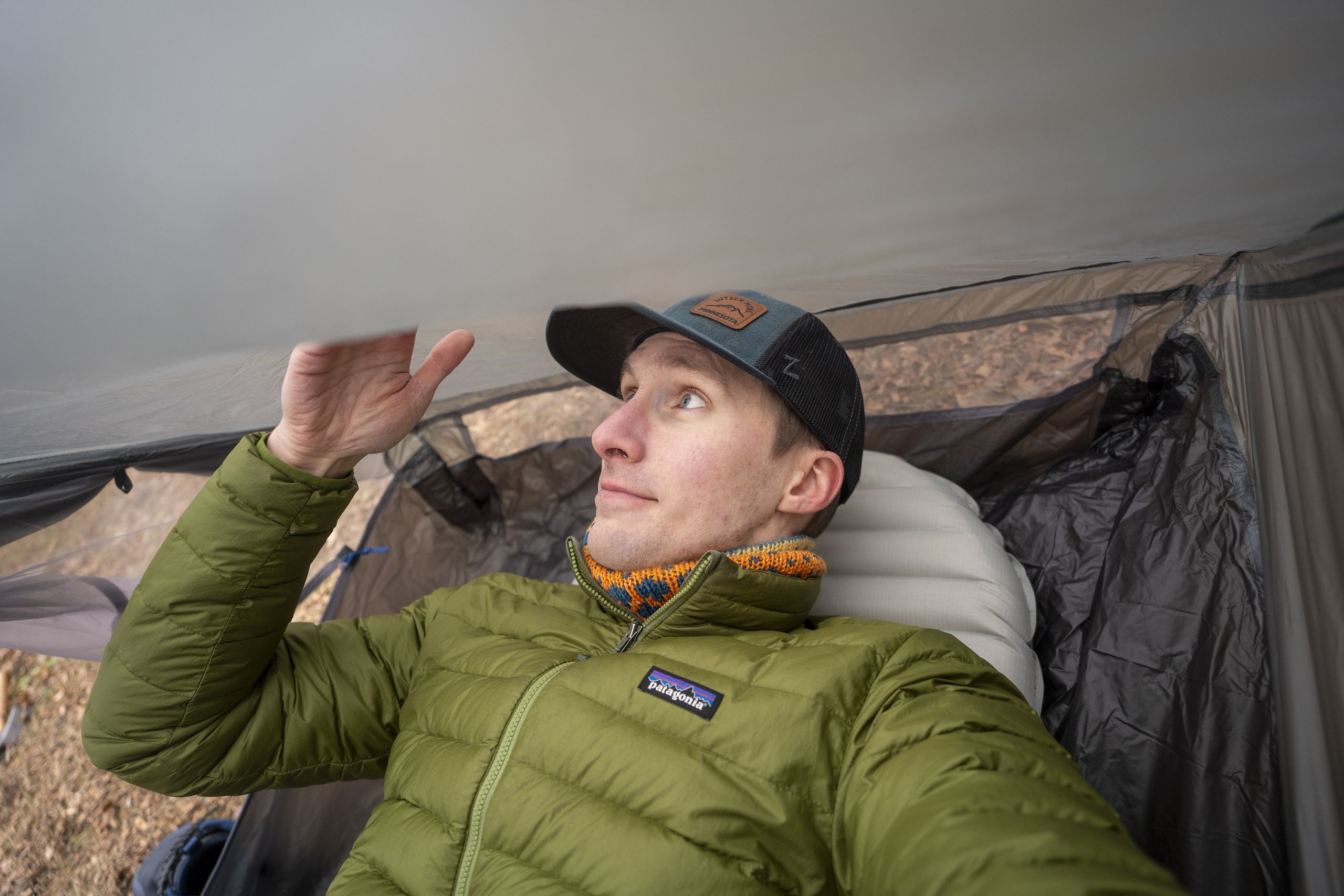
Comfort
The One has a number of great features that make it comfortable for the right person, but this is not a tent for tall folks. To get height issues out of the way, a 5’11” person on a 2.5in pad with a 20 degree quilt will have their head and the footbox of the quilt touch the end walls.
This means that for anyone near that height should either look elsewhere or commit to always using the panel pulls to increase the usable space. Adding to this issue is that due to the single wall nature of this tent, condensation on the walls is more likely to brush against a footbox. On a section of the Superior Hiking Trail which is often quite humid due to the plethora of rivers and lakes, a member of a trail family kept running into this issue with The One, leading to soggy mornings.
On a more positive note, many trails do not suffer from the condensation stress test that the Superior Hiking Trail does, and we can absolutely see The One thriving in those regions. We do want to note that the half-vestibule is paneled with mesh, making it a great peak vent for moisture from your breathing. But even with adequate ventilation, environmental issues sometimes make condensation inevitable.
Height and condensation issues aside, we believe The One has a lot going for it. The ample headroom is a clever use of two trekking poles and one of our favorite features. The wall near the head is still too close to make changing clothes effortless, but it’s better than most. The interior pocket is also large and well-positioned for holding a headlamp, phone, damp socks, or battery bank during the night.
While the side-to-side headroom is excellent, the actual floor width falls short, leaving The One with one of the smallest floor areas at 15.8 square feet of interior space. The sloping side walls slightly limit usable space.
Additionally, the tapered floor, narrowing from 33 inches to 21 inches, means this isn’t a tent we’d want to share our backpack with frequently. Fortunately, the vestibule is spacious and comfortable for storing our backpack and shoes overnight. However, the vestibule’s generous size is offset by the frustratingly small door area, making entry and exit more challenging than with any other one-person tent we tested.
It may sound like we’re complaining a lot about The One – and we are – but it’s important to step back and understand the purpose of this tent and its intended users. Central to this discussion is the idea that comfort is subjective. Gossamer Gear is recognized for producing some of the highest quality and cutting-edge ultralight gear available on the market.
This is the same company that makes ⅛ inch foam sleeping pads and 8 ounce backpacks. The One isn’t intended to provide a luxurious experience for the masses; instead, it aims to appeal to those who understand the trade-offs involved and deeply know what makes them comfortable in the backcountry. For these individuals, the small door, limited floor space, and thin materials may not be deal breakers. All of these trade-offs come with an incredibly low weight for a silnylon shelter, and for those interested in The One, weight is likely their top priority. We believe it’s entirely possible to get a great night’s sleep in The One, and we’ve known hikers to use them for dozens of nights on long-distance trails without any issues.
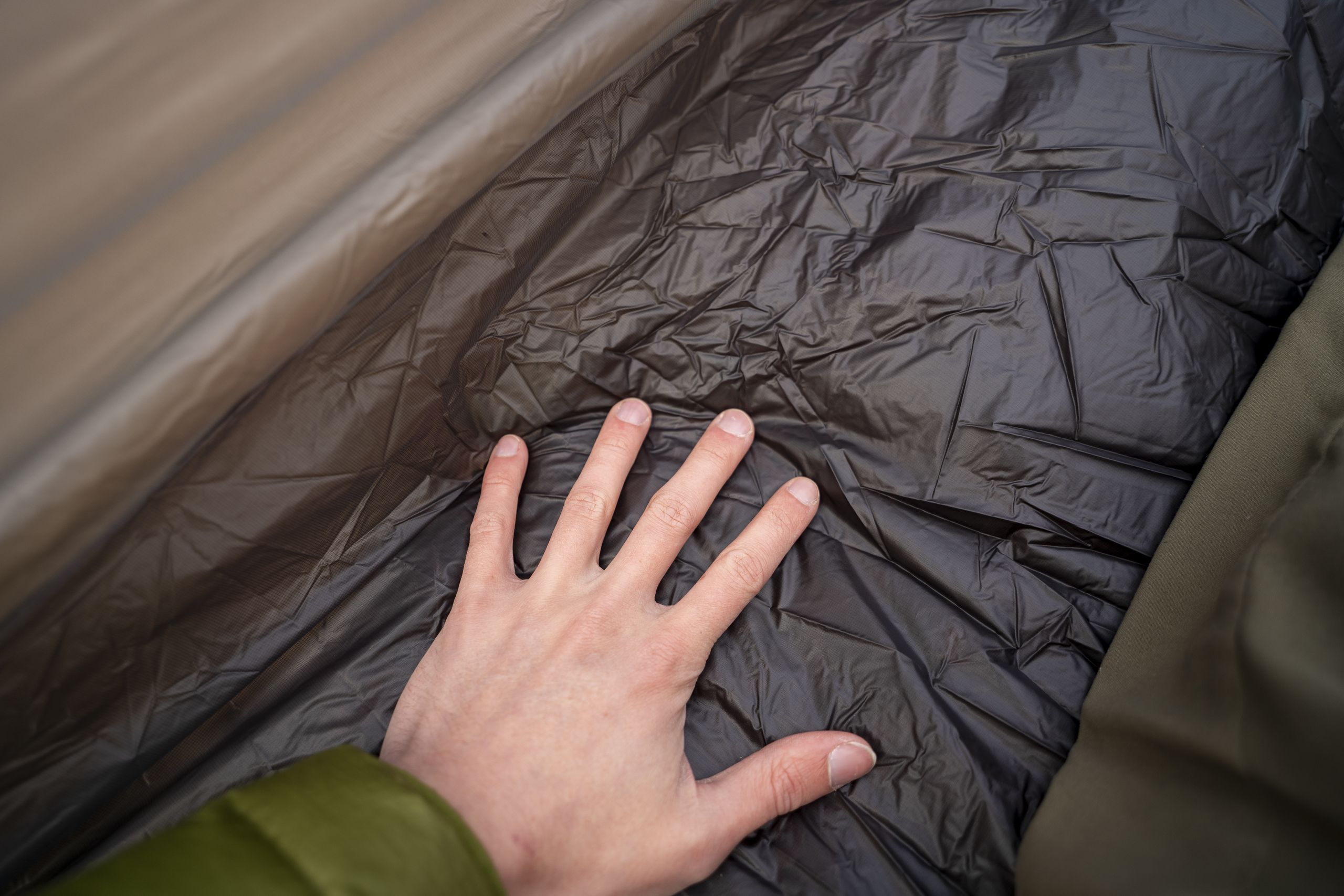
Weight
Weighing 19.5 ounces on our scale, we are amazed by what Gossamer Gear has achieved with a silnylon shelter. This firmly places it in the realm of Dyneema Composite Fiber (DCF) tents, which come with astronomically high prices. However, due to its silnylon construction, The One is priced in a way that puts all of those to shame, making it something of an anomaly in the ultralight category.
Additionally, the low weight and use of silnylon offer another advantage: this shelter is one of the smallest packed options we’ve encountered. Gossamer Gear rates it at 5×10 inches when rolled.
This weight comes with tradeoffs, particularly regarding durability, comfort, and weather resistance. We will elaborate on these aspects in their dedicated sections, but it’s important to mention that The One isn’t designed to be bombproof, luxurious, or suited for severe storms. Its low weight caters to backpackers who understand the tradeoffs involved and can integrate The One into their adventure plans like a puzzle piece.
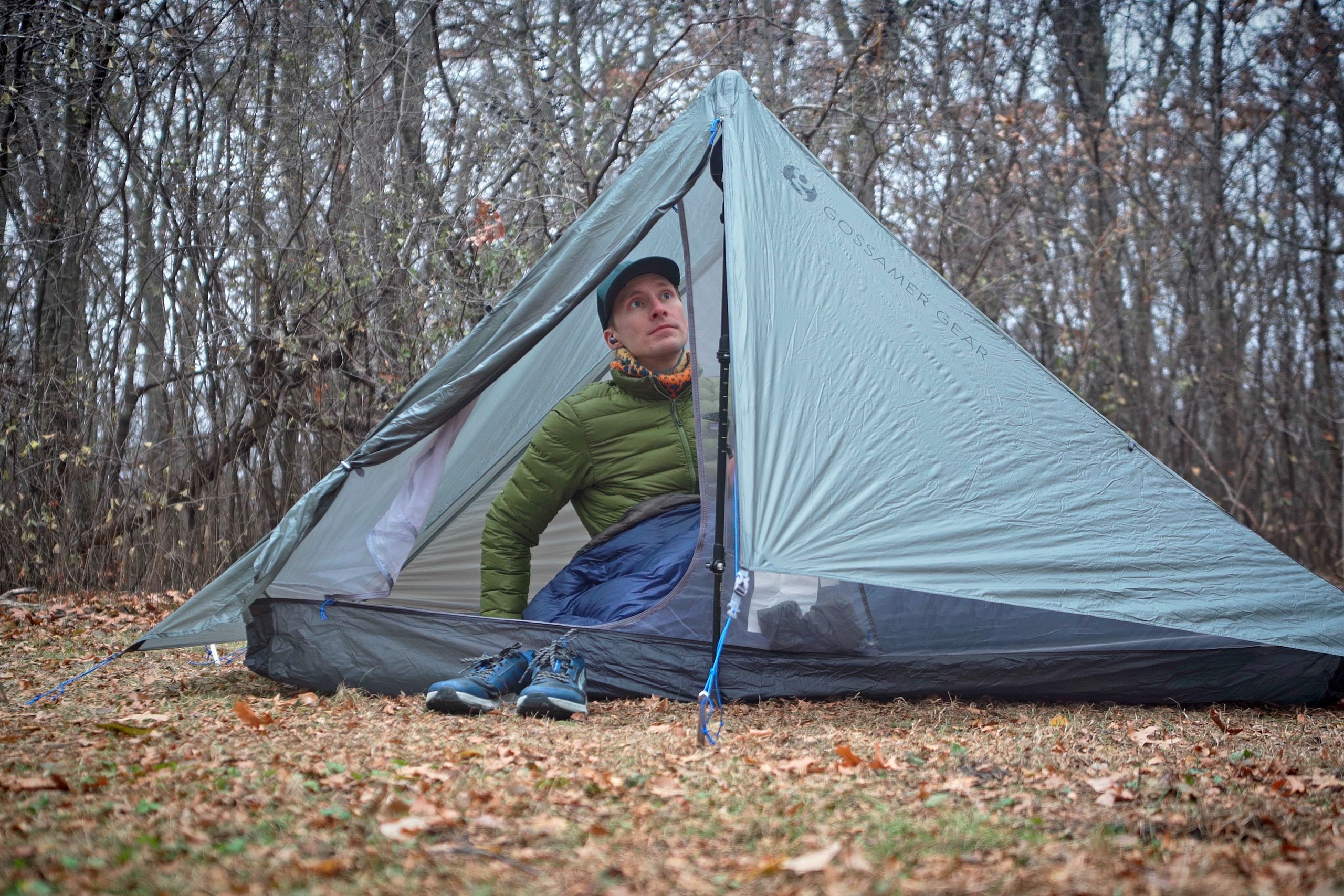
Ease of Use
With its hexagonal shape, The One sets up fairly easily. Staking out the four corners is straightforward, and inserting the door trekking pole only required a little effort to ensure it remained upright while securing the door.
The rear trekking pole was easily inserted due to a fly that didn’t touch the ground, and the final stake completed the process. We had no trouble achieving a nearly perfect pitch on the first attempt, only needing to adjust the corners slightly afterwards, which is typical for trekking pole tents.
Unfortunately, the small door somewhat hinders ease of use, as it makes getting in and out of the tent uncomfortable. Most tents with side doors allow you to sit up from a lying position, pivot your legs out of the tent, and exit easily.
However, because the door is small and close to the head end, you need to move your body first before pivoting your legs out. We believe it’s something a user will get used to in time, but it’s not ideal.
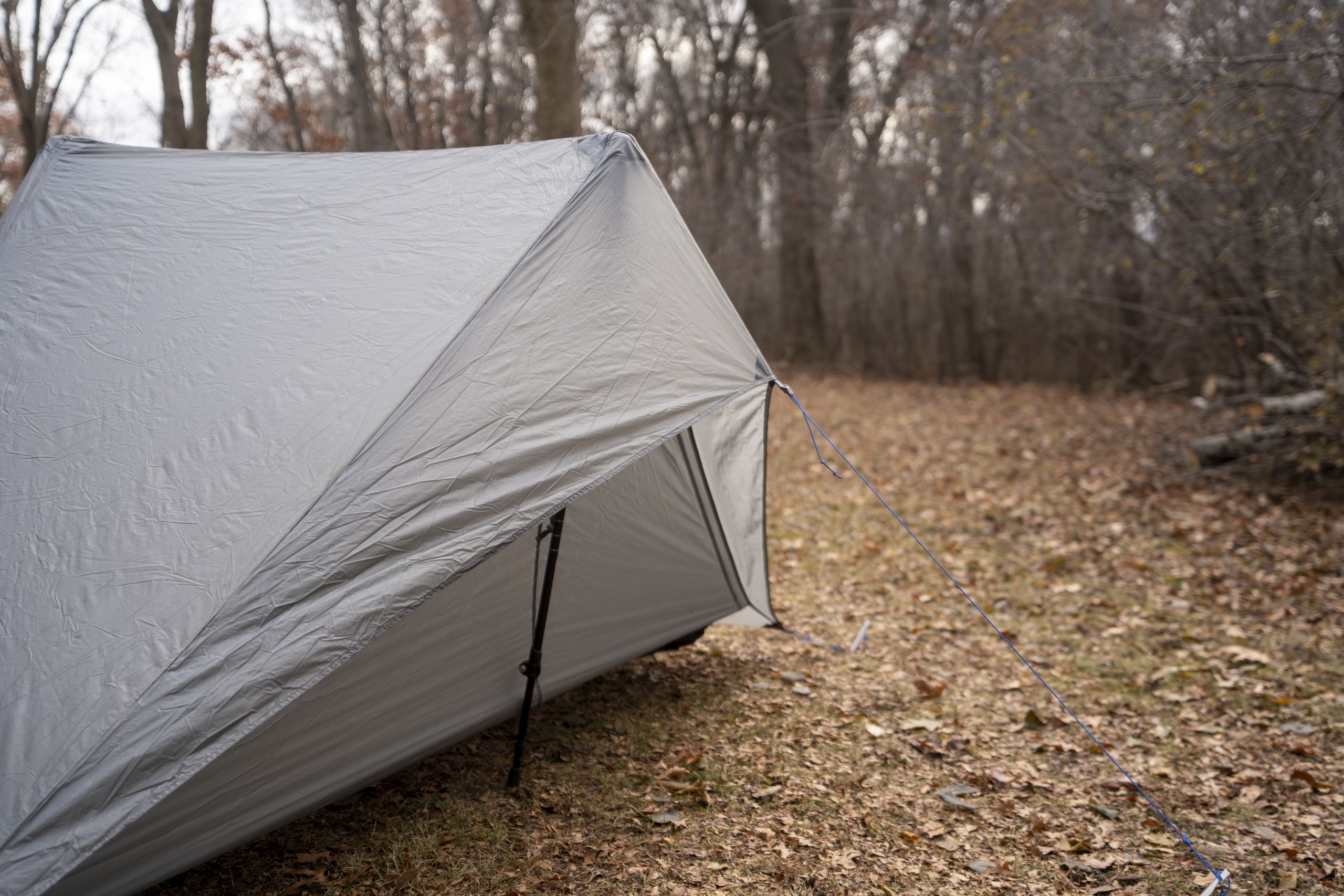
Weather Resistance
While many people have successfully used The One on long-distance thru-hikes without any issues, we believe that certain aspects of its design are not ideal for weather resistance.
First, the short rain fly on the back of the tent saves weight but only extends a short way down the shelter, creating a large vertical surface area that could act as a wind scoop for gusts. In a storm with constantly changing wind directions, this design would not be our top choice.
Secondly, the use of thinner 10d silnylon gives us pause. Silnylon is one of the strongest fabrics available, but while most manufacturers use 20d or 15d for their tents, Gossamer Gear pushes the limits by using 10d in both the rain fly and the floor. These two design choices make us view The One as more of a “fair weather” tent, suitable for conditions that are mostly predictable and where shelter failure wouldn’t be life-threatening.
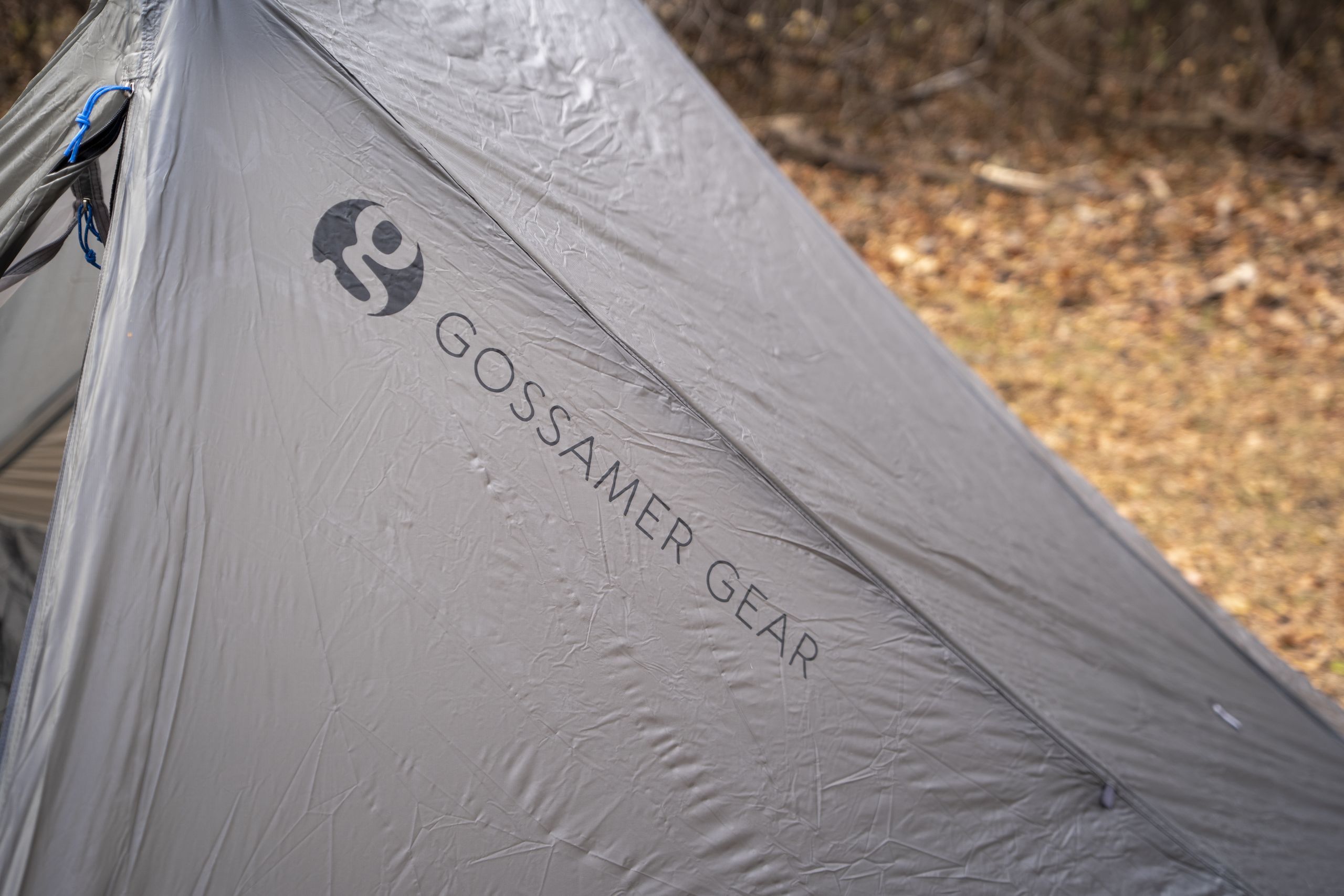
Durability
As discussed in the weather resistance section, the extremely thin material choice for The One means this shelter requires a bit more care. Gossamer Gear recommends using a polycryo or nylon groundsheet to extend the floor’s lifespan, and although we generally don’t hike with groundsheets, this tent would likely be the exception where we feel it’s necessary.
For trails that typically have fair weather, such as the Pacific Crest Trail, we believe The One would perform well, especially when used with a groundsheet. For more challenging or windy trails like the Laugavegur in Iceland, a sturdier option would be recommended.
On a side note, the included stakes are of average quality and would be among the first things we’d replace. We appreciate that stakes are included, but we bent one during our first attempt, and the ability to easily bend it back into shape with our hands doesn’t boost our confidence.
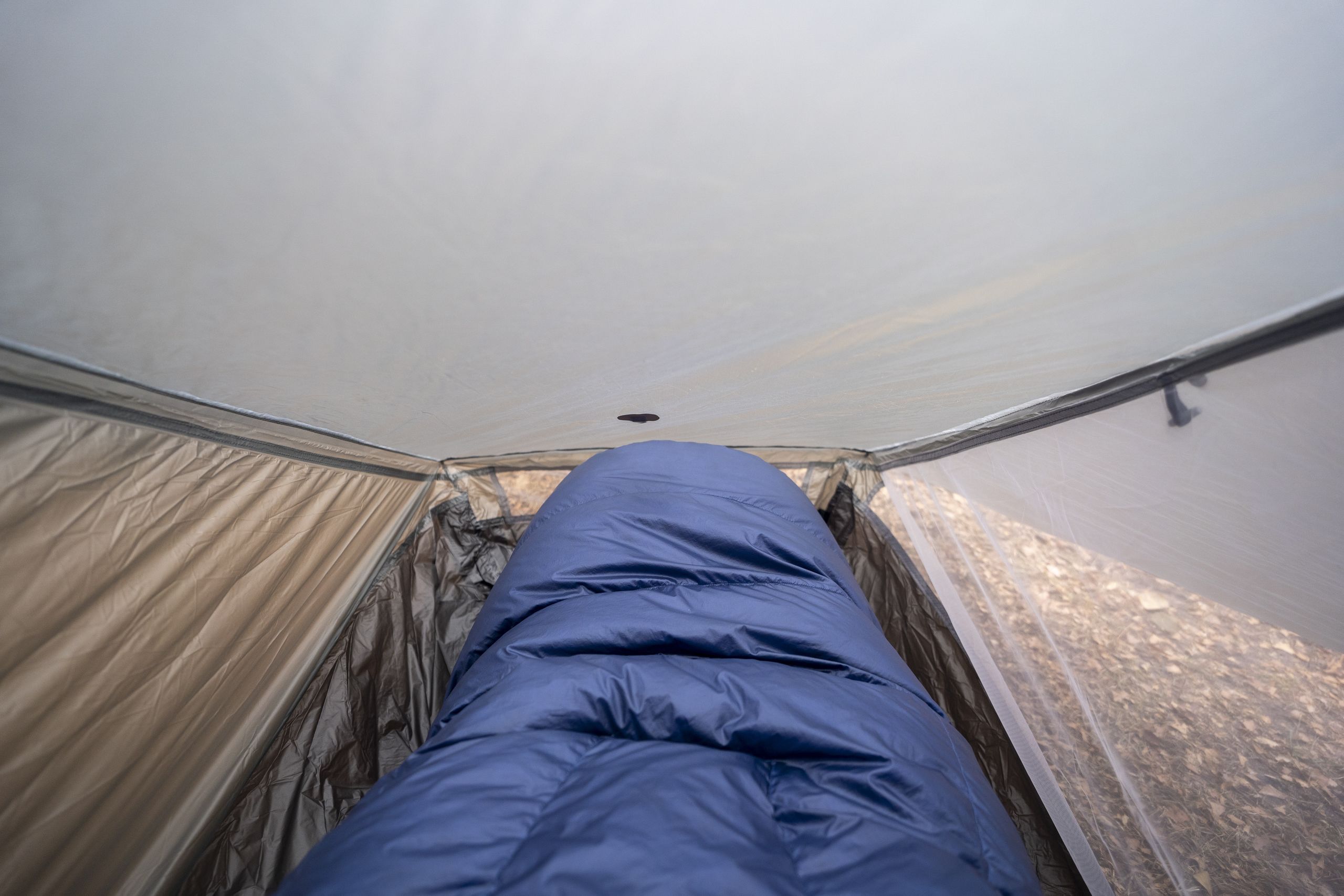
Should You Buy the Gossamer Gear The One Tent?
Few other tents require as much careful consideration as The One, given its many amazing advantages contrasted with significant downsides. For first-time backpackers, this is not an ideal shelter. The extra care needed, small dimensions, and poor wind resistance leave too much room for error.
On the other hand, for a moderately experienced backpacker who is ready to reduce their base weight without spending a fortune, this could be ideal. It seems that Gossamer Gear is targeting someone with experience who can weigh the trade-offs involved and accept them in pursuit of a lighter pack. Despite any complaints we may have raised in this review, we believe that, for these individuals, The One is a fantastic shelter. The fact that it is priced lower than anything in its weight range makes this an excellent value.
It’s easy to criticize Gossamer Gear for creating a tent with unconventional design choices that differ from the norms of backpacking gear, but we want to encourage gear manufacturers to continue innovating and pushing boundaries. Especially in the world of ultralight gear, where understanding exactly what you need for comfort is crucial, the trade-offs here are not poor design choices; they are deliberate decisions made in pursuit of what truly matters.
The One isn’t trying to appeal to everyone; it aims to be excellent for a specific group of people seeking an ultralight tent at a low price, who are willing to accept certain tradeoffs. In that regard, this product is fantastic.
What Other Ultralight Tents Should You Consider?
If the Gossamer Gear The One isn’t the perfect fit, our best ultralight tents guide has many other options.
Durston X-Mid Pro 1 Review: Although The One deserves commendation for its polarizing design choices that may not appeal to everyone, we also want to offer equal praise to a tent that aims for excellence for all. The X-Mid Pro 1 achieves this better than any other we tested, effectively balancing performance, weight, and price in a way that left us thoroughly impressed. The length is generous, even for taller individuals, the vestibules are outstanding, the materials are high quality, it offers great headroom, and it also manages to be incredibly lightweight at a reasonable price for a DCF shelter. If you appreciate the ultralight approach of The One but want to elevate your experience, the X-Mid Pro 1 is our top recommendation.
Gossamer Gear The Two Review: For a design style similar to The One, Gossamer Gear also offers a more traditionally designed two-person shelter called The Two. It features a classic A-frame structure with several unique design choices and an astonishingly low weight of 25.3 ounces on our scale. This shelter is still constructed from 10d silnylon for both the fly and the floor, although it isn’t our first choice for storm conditions.
Six Moon Designs Lunar Solo Review: If the design trade-offs of The One are too much to handle and weight isn’t your top priority, the Lunar Solo is one of the most robust one-person shelters available. We appreciate its ample floor space, durable materials, and straightforward design, which make it a favorite among long-distance hikers and casual weekend warriors alike.


